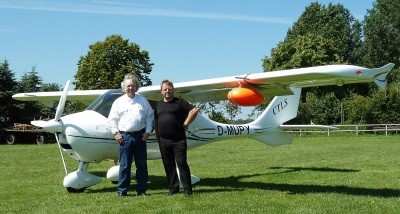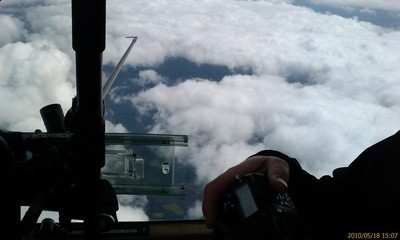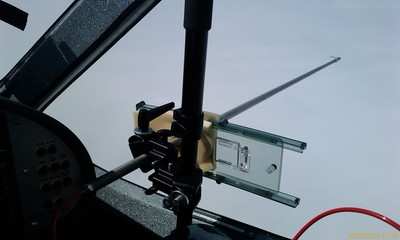Sat, Jul 02, 2011
Returns To Mission First Undertaken After 2010 Iceland
Eruptions
European travel was recently interrupted for a second year
by volcanic eruptions in Iceland. This time, it was the
Grimsvötn volcano that spewed ash into the atmosphere,
presenting a major expense for airlines and airports plus
inconvenience for passengers. The Eyjafjallajökull eruption,
in April 2010, caused the largest closure of European airspace
since World War II, with losses estimated at
between $2.2 and $3.6 billion.

To determine the extent of the problem as it compares to last
year, the Laboratory for Environmental Monitoring of the
Fachhochschule Düsseldorf (FHD) lead by Prof. Dr. Konradin
Weber conducted volcanic ash test flights over northern Germany,
especially in the region of Bremen, Hamburg and Schleswig,
Holstein, in a Flight Design CT microlight airplane. The London
Volcanic Ash Advisory Center had predicted significantly increased
volcanic ash concentrations for this region due to the eruption of
Grimsvötn causing airport closures as a safety precaution.
The test flights were carried out on behalf of the Deutscher
Wetterdienst (German Weather Forecast, the federal German
organization responsible for measurement of airborne radioactive
particles etc.). The aircraft selected for this measurement was a
high performance light aircraft called the Flight Design CT fitted
with a laser-based particle spectrometer (GRIMM OPC). After the
volcanic ash cloud from the Eyjafjallajökull volcano a year
ago this equipment was used successfully gaining international
attention. The aim of the 2011 testing flights over northern
Germany was to obtain data in-situ regarding the volcanic ash
cloud, and in particular to gain data on the level of concentration
and the distribution of volcanic ash. During the flight, ash
particles were collected from the air for later examination using
electron microscopy.

The research aircraft operated by Professor Weber and his team
detected structures of the volcanic ash cloud at an altitude range
2.300 to 3.200 meters. At this altitude, the volcanic ash cloud was
observed as a horizontal gray-brown seam. The volcanic ash
concentrations measured in the Bremen-Hamburg area proved to be
comparatively low. The cost to determine this was a fraction of the
expense if large aircraft were used for this investigation.
The next use of this equipment is planned for early July 2011.
"The Measurement campaign will run from 1 to July 10 at Etna
volcano in Sizilia, Italy," said spokesman Uwe Post.

"We are proud to help aviation safety in airliners through the
very economical use of our CT aircraft," reported Flight Design
GmbH CEO, Matthias Betsch. "While we enjoy flying our aircraft, our
personnel also use airline travel and we are pleased to help insure
their safe travel."
More News
Aviation Governance Secured...At Least For a While The National Business Aviation Association similarly applauded the passage of the FAA's recent reauthorization, contentedly recou>[...]
Emphasis On Growing The Future of Aviation Through Concentration on 'AFFORDABLE FLYERS' It's been a number of years since the Latest Edition of Jim Campbell's HUGE SportPlane Resou>[...]
Amazilia Aerospace GmbH, Develops Digital Flight Control, Flight Guidance And Vehicle Management Systems Textron eAviation has acquired substantially all the assets of Amazilia Aer>[...]
Honeywell's Primus Brings New Tools and Niceties for Hawker Operators Hawker 4000 business jet operators have a new installation on the table, now that the FAA has granted an STC f>[...]
Company Celebrates Niche-but-Important Advancement in Industry Standards Echodyne has announced full integration of its proprietary 'EchoFlight' radar into the e American Aerospace>[...]
 Bolen Gives Congress a Rare Thumbs-Up
Bolen Gives Congress a Rare Thumbs-Up The SportPlane Resource Guide RETURNS!!!!
The SportPlane Resource Guide RETURNS!!!! Buying Sprees Continue: Textron eAviation Takes On Amazilia Aerospace
Buying Sprees Continue: Textron eAviation Takes On Amazilia Aerospace Hawker 4000 Bizjets Gain Nav System, Data Link STC
Hawker 4000 Bizjets Gain Nav System, Data Link STC Echodyne Gets BVLOS Waiver for AiRanger Aircraft
Echodyne Gets BVLOS Waiver for AiRanger Aircraft





